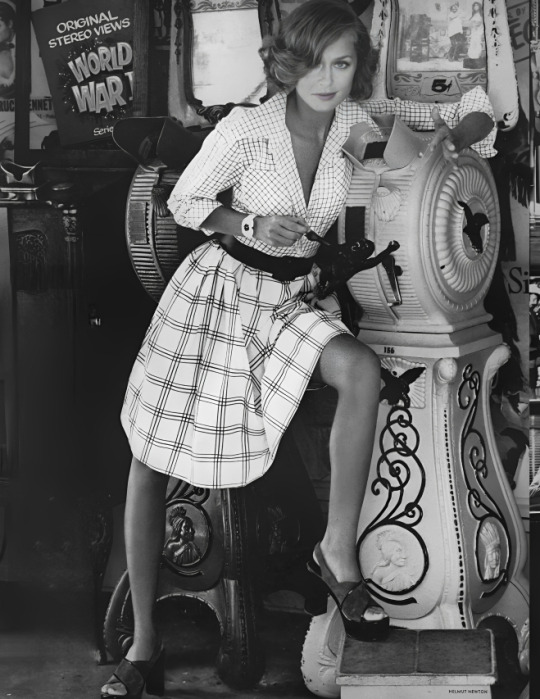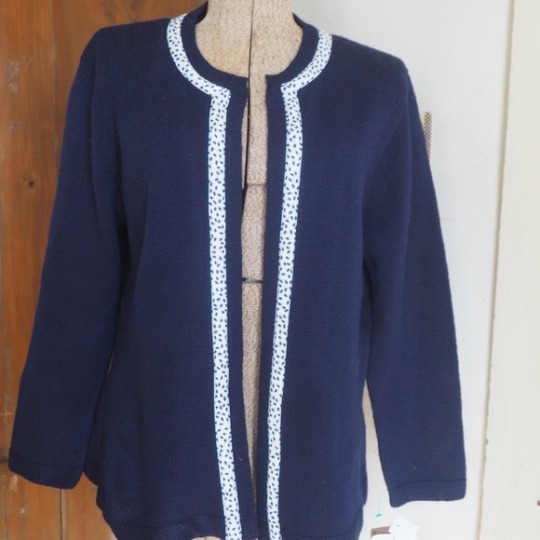#serbin fashions
Text

US Vogue June 1972
Lauren Hutton in a shirt dress, reds, whites and navy separates from Serbin Fashions over a plaid plaid. Polyester and cotton dress (Dan River fabric). Charles Jourdan shoes. Trifari watch.
Lauren Hutton en robe-chemise, rouges, blancs et bleu marine à l'aspect séparé de Serbin Fashions sur un plaid à carreaux. Robe polyester et coton (tissu Dan River). Chaussures Charles jourdan. Montre Trifari.
Photo Helmut Newton
vogue archive
#us vogue#june 1972#fashion 70s#1972#spring/summer#printemps/été#serbin fashions#charles jourdan#trifari#lauren hutton#helmut newton#plaid#shirt dress#robe chemise
39 notes
·
View notes
Link
So good I had to share! Check out all the items I'm loving on @Poshmarkapp #poshmark #fashion #style #shopmycloset #gforiginals #serbin: https://posh.mk/uxVJ0XcTFZ
0 notes
Photo

So good I had to share! Check out all the items I'm loving on @Poshmarkapp #poshmark #fashion #style #shopmycloset #serbin: https://bnc.lt/focc/Vbg0bXnQxK
0 notes
Text
‘The Colour of children’s gender stereotypes’ - Rachel Karniol (2011)
Colour and Gender Stereotyping
Colours are often gender-stereotyped. In many countries, adults have different colour preferences for male versus female children and from birth, infants and children are exposed to colours that reflect their gender. Girls clothes, toys, and rooms in Canada (e.g., Pomerleau et al. 1990) and the United States (e.g., Shakin et al. 1985) are coloured in variations of pink, and boys clothes, toys, and rooms are coloured in variations of blue. This gender-based colour dichotomy extends to the pink versus blue congratulations cards for new born girls versus boys in the United States (Bridges 1993) and the preponderance of pink Halloween costumes for girls (Nelson 2000). Girls Lego world and Barbies social world are both dominated by pink (Falkstrm 2003) and the pink Power Ranger was the sole female in this popular children’s show. A content analysis of toy ads shows that pastels, primarily pink and purple, are used only for girls toys (Pennell 1994).
Red and green are also differentially associated with females and males. In a study of American mail-order catalogues, red was significantly more often associated with women’s, and not with men’s clothing (Frank 1990). In fact, Scherbaum and Shepherd (1987), who discuss a societal aversion to men wearing red (p. 398), found that males dressed in red were perceived by American participants as improperly attired as compared to ones in blue and as compared to women dressed in red. As for green, women prefer warm colours and green is viewed as one of the cold colours (DeLong and Cerny 1983). In fact, green is twice as prevalent in male versus female infants birth congratulations cards in the United States (Willer 2001) and an infant dressed in a blue/green striped shirt was confidently judged by American participants to be male rather than female (Leone and Robertson 1989).
In this light, colour plays an important role in children’s emergent gender stereotyping. First, reliance on colour allows children to disambiguate gender-ambiguous contexts. To elaborate, in a study with American 25 year-olds (Cherney et al. 2006a), children were shown photographs of new toys from a toy catalogue. Each toy had been classified by adults as appropriate for males, for females, neutral, or ambiguous. Colour was the primary justification in children’s classification of ambiguous toys as more appropriate for one versus the other gender. Across all toys, boys and girls did not differ in their citation of colour as the reason for classifying a given toy as more appropriate for a given gender, suggesting that even at this young age, both male and female children clearly associate colour and gender. About 95% of the children identified pink as a colour for girls whereas blue was somewhat less strongly associated with boys.
Second, colour drives stereotyped-based expectations as to the association of objects, clothing, dispositions, and activities with individuals of a given gender. For instance, as remarked by a 6-year-old American boy, if girls are going to play with trucks, they’d better play with girl trucks namely, pink ones (Gelman et al. 2004, p. 105). Even 1824-month-old North American infants associate pink with females and blue with males, as evident in a selective looking task involving violations of gender-based expectancies (Eichstedt et al. 2002). In a recent study conducted in Britain (Tenenbaum et al. 2010), drawings of figures wearing green were generally identified as boys by 6-year-old children. Similarly, Picariello et al. (1990) had 36 year old American children choose which of twin dolls, dressed in pink and blue, was associated with different adjectives (e.g., strong/gentle) and professions (firefighter/ nurse). Stereotyping increased with age, and at all ages, colour of clothing impacted children’s impressions of the weird twin.
Although there were no reported effects of gender in the above study, boys anecdotal comments are consistent with their greater distortion of gender counter-stereotypic information. Thus, a first grader insisted that a male twin, labelled clearly with a male name, but dressed in pink, was nonetheless a girl, a phenomenon Martin and Ruble (2010) discuss as identity negation. Identity negation could be interpreted as reflecting lack of gender constancy, but boys and girls of these ages do not differ in their levels of gender constancy (Karniol 2009; Levy and Carter 1989) and gender constancy at these ages does not generally predict diverse measures of gender stereotyping or gender-stereotyped behaviour (e.g., Gelman et al. 1986; Lobel and Sex Roles (2011) 65:119132 121
Menashri 1993; Serbin and Sprafkin 1986). In fact, the preponderance of evidence suggests that boys are more highly gender-stereotyped (e.g., Urberg 1982), their gender stereotypes are less flexible and more stringently held (e.g., Archer 1984; Bussey and Bandura 1999), and they engage in more distortion of gender counter-stereotypic information (e.g., Carter and Levy 1988). Maccoby (1998) contends that as part of developing a gender-based group identity, children engage in behaviours that mark themselves off from the other gender symbolically (p. 44) and that boys are more concerned with distinguishing themselves from girls than vice versa.
The rigidity of boys gender stereotypes may partially reflect the greater restrictiveness of parents with respect to gender counter-stereotypic behaviour in boys than in girls (e.g., Kane 2006). Thus, American parents hold more rigid stereotypes of males (e.g., Leaper 2002) and exert greater pressure towards conformity to gender-stereotyped behaviour in boys (Leaper and Friedman 2007). American parents apparently also actively prevent young boys from using female-stereotyped toys (e.g., there’s not many toys I wouldn’t get him, except Barbie, Kane 2006, p. 160), and female-stereotyped colours (e.g., He likes pink and I try not to encourage him to like pink just because, you know, he’s not a girl, Kane 2006, p. 160). In Spain as well, boys are apparently never dressed in pink (de Miguel 1984).
Parallel social forces may well account for girls use of a greater variety of colours. If there are fewer restrictions on girls in terms of their behaviour in gender-related domains, girls would be expected to be more flexible in their adoption of stereotypes related to gender and to colour. In fact, both male and female British children view male gender roles as more rigidly proscribed (e.g., Henshaw et al. 1992). Importantly, then, because selves are themselves gendered, they necessarily play a role in the way they structure and conceptualize the social world and the gender stereotypes that are embedded in it.
The Gender-Stereotyped Nature of Illustrations
Colouring itself can be a gendered activity. Although there are colouring books geared to both boys and girls, many colouring books are geared specifically for one gender, as found in a recent analysis of randomly selected colouring books in the United States (Fitzpatrick and McPherson 122 Sex Roles (2011) 65:119132 2010).
Colouring books for girls are dominated by fairies, princesses, and various fashion dolls whereas colouring books for boys feature vehicles, weapons, and action figures (e.g., Fitzpatrick and McPherson 2010). In Britain, colouring books featuring Disney-type princesses are generally the top selling ones for girls and ones featuring action heroes are the top sellers for boys (e.g., Lights, Camera, Action 2007). Children’s colouring books, therefore, provide rich contexts for examining children’s gender stereotypes in their use of colour as it relates to different types of illustrations.
What constitutes a gender-stereotyped illustration? Gender is often cued by name (e.g., Mickey/Minnie Mouse), appearance (including clothing and long hair, Hodge and Tripp 1986), and the gender-stereo typicality of the activities engaged in (Arthur and White 1996). The use of children’s toys in general, and those based on media figures in particular, as illustrations in children’s colouring books necessarily raises the issue of the gender-differentiation of toys. Adults use gender-related cues to differentiate the world of toys into male-appropriate and female-appropriate ones. On a scale of 19 with the end points representing appropriate only for girls or appropriate only for boys, adults rated a Mickey Mouse toy as5.01but the equivalent Minnie Mouse toy was rated 3.33 on the same scale (Campenni 1999). Similarly, the Power Rangers, Batman, and other male superheroes were rated higher than 6 on the same 9-point scale but female superheroes were rated only 3.22, (Campenni 1999), clearly showing that adults dichotomize the world of children’s toys.
The relevant question, though, is what constitutes a gender-stereotyped figure for children? Dolls, especially fashion dolls, and action figures are probably the most gender-stereotyped of all children’s toys. By 24 months, girls look more often at drawings of dolls than of cars whereas boys evidence the opposite pattern (Jadva et al. 2010). By age 3, girls select Barbies and other dolls more often to play with and by age 5, boys select more action figures to play with than do girls (Servin et al. 1999). Nelson (2005) found that boys rooms included more male figures, especially adult male action figures, whereas girls rooms included more female figures, especially baby and child figures. Of course, the content of young children’s rooms reflects both parental and children’s preferences (cf., Rheingold and Cook 1975). Yet apparently, toy purchases that reflect children’s requests are more gender-stereotyped than ones that reflect parental preferences (Fisher-Thompson 1993) and children’s Christmas toy requests are highly gender-stereotyped, with British boys asking for and getting more action figures, and girls, asking for and getting more dolls (Robinson and Morris 1986). In American children’s letters to Santa, 45% of
girls asked for Barbie dolls and 45% of boys asked for various action figures (Otnes et al. 1994).
In fact, sales of Barbie dolls and accessories account for worldwide annual sales ranging from 1 to 2 billion dollars (Casey 2008; Stanley 2005). Young girls also own other types of dolls, including Disney dolls, and Disney Princess play is also prevalent in the United States (Wohlwend 2009). As well, by 2006, approximately 120 million Bratz dolls were sold all over the world (Felgner 2006) and Bratz dolls accounted for about 40% of fashion doll sales in 2006 (McAllister 2007). The fact that Bratz did not replace Barbie in girls preferential world indicates that both types of dolls are favoured by girls. Unsurprisingly, Bratz dolls are assigned scores of 1.53 by adults, with 1 indicating only for girls and 9 indicating only for boys (Blakemore and Centers 2005).
In a parallel fashion, male action figures, which accounted for about 1.3 billion dollars in worldwide sales in 2006 (Ebenkamp 2006), are stereotypically associated with boys. In particular, both Batman and Superman are recognizable superheroes even by individuals who have never read a comic book (Bongco 2000), possibly because of their prevalence in toy stores all over the world (Fleming 1996). They have become what Macdougall (2003) calls transnational commodities. Batman in particular appears to hold a special fascination for boys (e.g., Gardner 1982), with a Warner Brothers executive commenting that Batman is literally part of the process of boyhood, especially for 611 year olds (Cooney 2004, p. 148). This fascination is evident in boys tendency to draw male superheroes, including Batman, in their spontaneous drawings (Gardner 1982; McNiff 1982). Importantly, boys play with action figures (Marsh 1999), not with dolls, denying vehemently their association with dolls (e.g., preschool boys protest Only girls play with dolls! and boys don’t have dolls, Lowe 1998, p. 218). This dissociation is also evident when in a letter to Santa a boy declares, No Barbie stuff because I’m a boy! (OCass and Clarke 2002, p. 44). In fact, playing with Barbie dolls is taken to be a sign of gender-variance (e.g., Gerouki 2010) and boys tease each other with accusations of playing with Barbie dolls (Renold 2004). In this light, then, illustrations of dolls and action figures are clearly gender-stereotyped in the eyes of children and adults.
https://www-proquest-com.ergo.southwales.ac.uk/docview/871984689?OpenUrlRefId=info:xri/sid:primo&accountid=15324
0 notes
Text
Danielle Serbin, Yuvaraj Sivalingam
Danielle Serbin, Yuvaraj SivalingamDanielle Serbin, Yuvaraj Sivalingam

NYT Fashion https://ift.tt/2OXFalo
See More bd news live
See More visit live bangla news
0 notes
Link

By Unknown Author from NYT Fashion https://ift.tt/2OXFalo
via IFTTT
0 notes
Link

By Unknown Author from NYT Fashion https://ift.tt/2OXFalo
0 notes
Link

By Unknown Author from NYT Fashion https://ift.tt/2OXFalo
0 notes
Link

By Unknown Author from NYT Fashion https://ift.tt/2OXFalo
via
0 notes
Text
Danielle Serbin, Yuvaraj Sivalingam

By Unknown Author Fashion https://ift.tt/2OXFalo
via Blogger https://ift.tt/2SRmXab
0 notes
Photo

"Danielle Serbin, Yuvaraj Sivalingam" by Unknown Author via NYT Fashion https://ift.tt/2OXFalo
0 notes
Text
Danielle Serbin, Yuvaraj Sivalingam

By Unknown Author
The couple met at a meeting of the Orange County Young Democrats in Santa Ana.
Published: February 16, 2020 at 02:15PM
from NYT Fashion https://ift.tt/2OXFalo
via IFTTT
0 notes
Link
I just added this listing on Poshmark: Vintage Serbin designed by Muriel Ryan size 10. #poshmark #fashion #shopping #shopmycloset
0 notes
Photo

DESIGN (Helsinki) | Design Diplomacy at Helsinki Design Week.
Design Diplomacy opens doors to the public of Embassy residences that only a few of us have been allowed to see. One design professional from each country meets a Finnish designer in a Design Diplomacy card game. Playful questions challenge both the speakers and the audience.
In addition to discussions that last for about half an hour, you will learn interesting details about unique residences and their architecture over a glass of wine. How many ambassadors have lived in the apartment? How does the place reflect its history and use?
Design Diplomacy is an event concept launched by Helsinki Design Week in 2016. In addition to Helsinki, Design Diplomacy discussions have been organized in Reykjavik, Tokyo, Madrid, Berlin and Oslo.
The series of discussions is supported by Nordic Council of Ministers.
Pre-registration for the discussions will start on the 19th of August. The series will be held in 13 embassies and will last from 6 September to 12 September.
foto credits : helsinkidesignweek.com
Ilia Serbin ; fashion-book.org
0 notes
Link

By Unknown Author from NYT Fashion https://ift.tt/2OXFalo
via IFTTT
0 notes
Link

By Unknown Author from NYT Fashion https://ift.tt/2OXFalo
0 notes